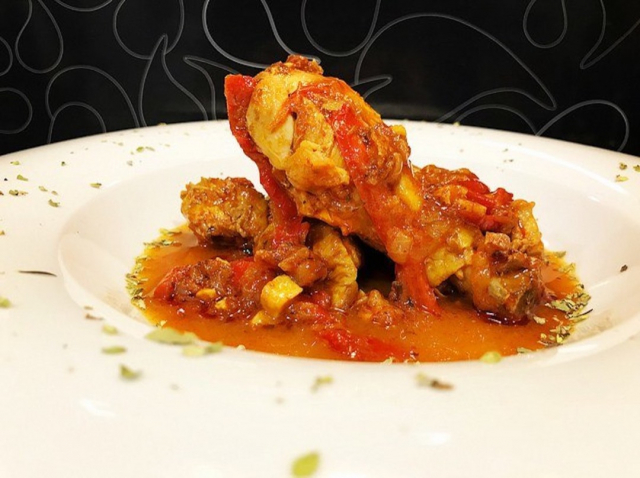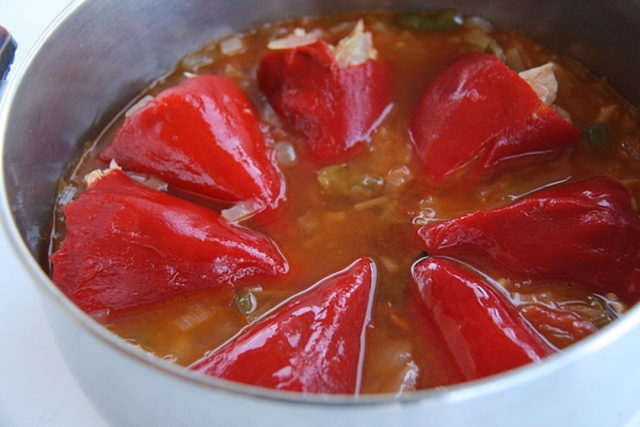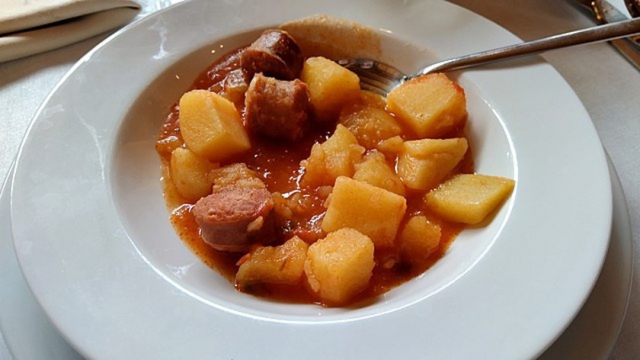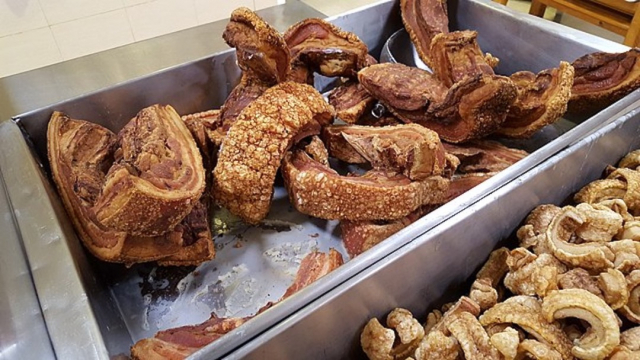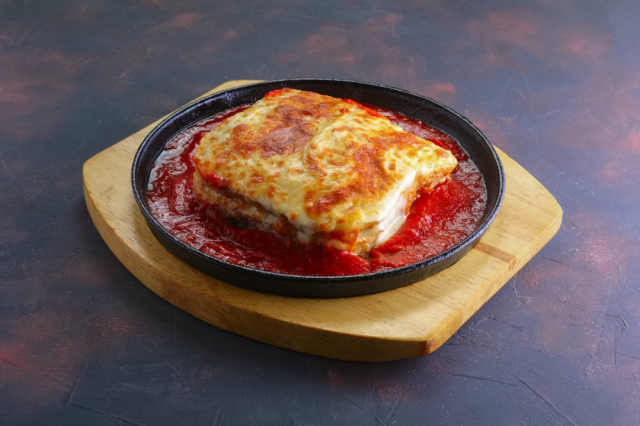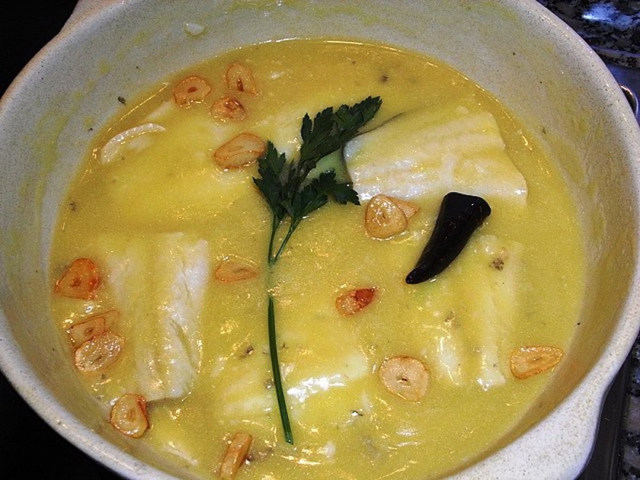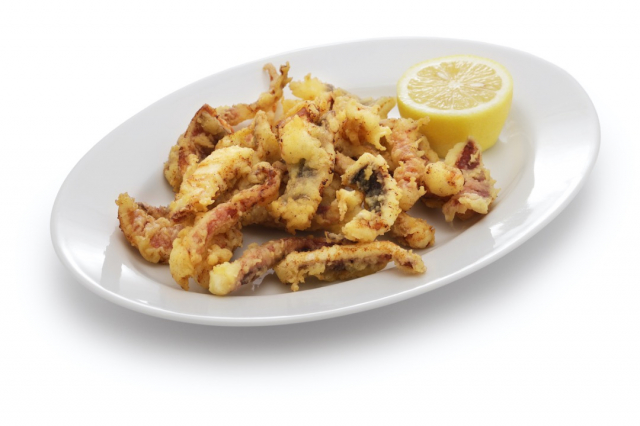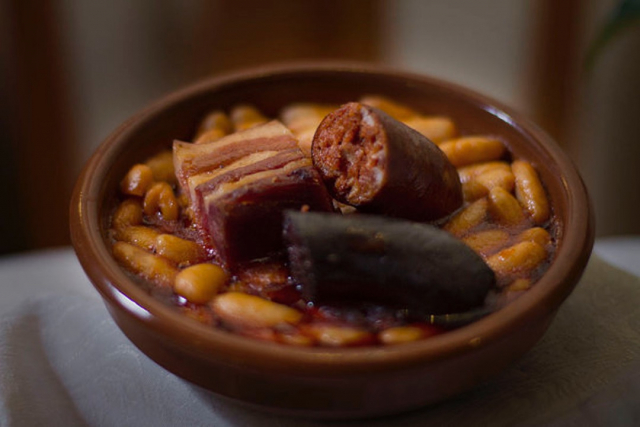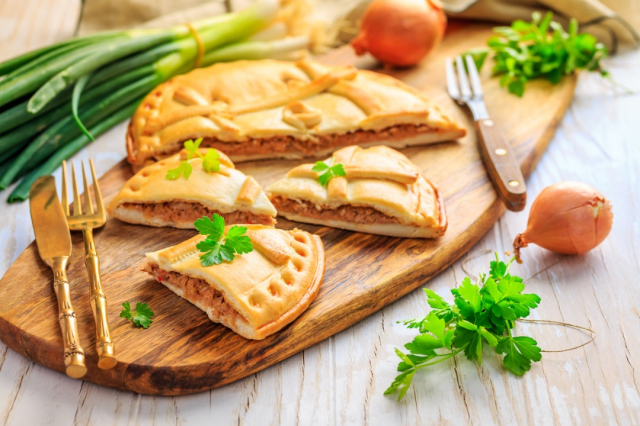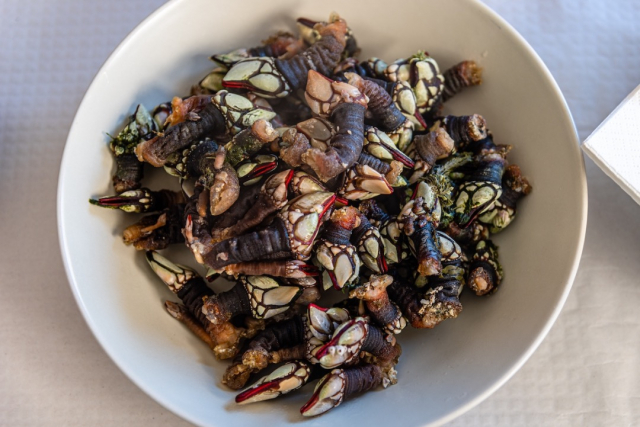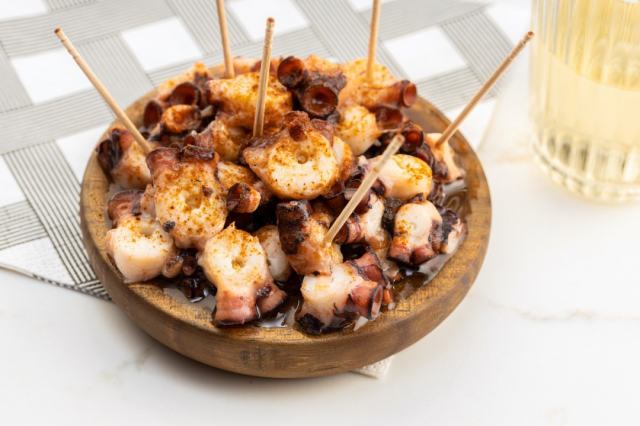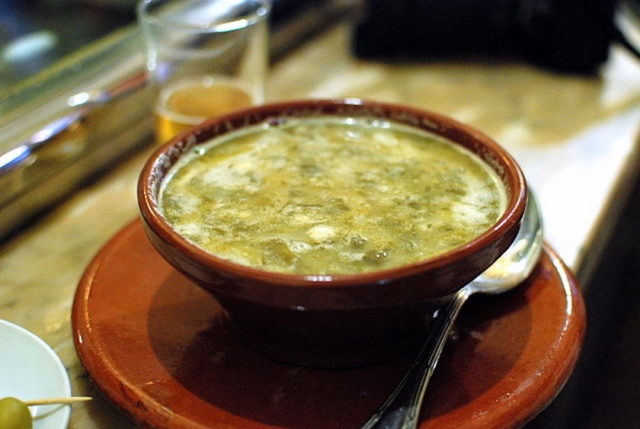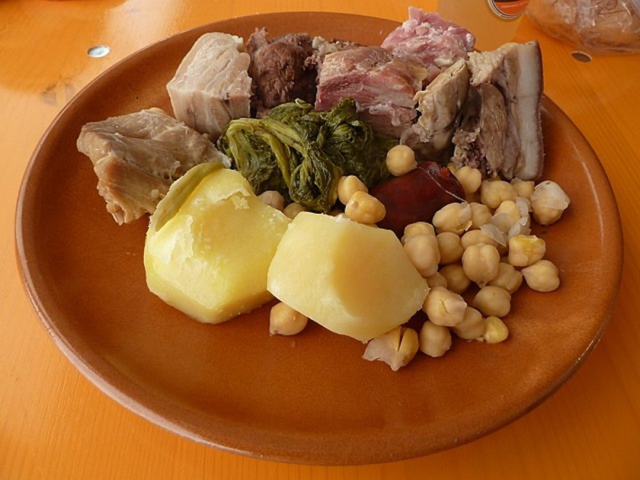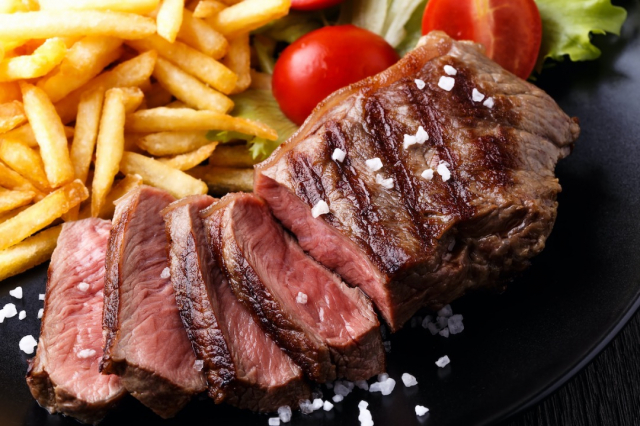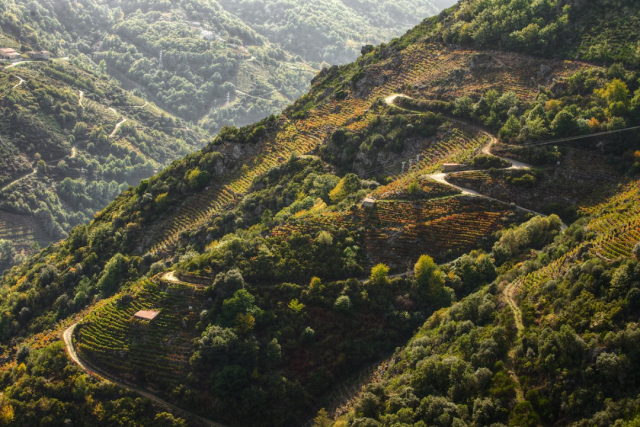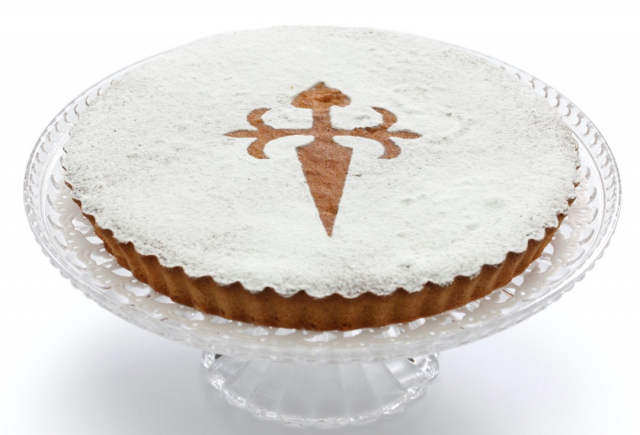Gastronomy on the Camino de Santiago is a must
We present the most representative recipes of the main Pilgrims' Routes divided by Autonomous Communities so that you can live this experience to the full.
Walking the Camino de Santiago is a very complete experience. This adventure allows us to get to know ourselves better, and can even change our lives. But if something makes it a unique journey is that it also brings with it an external learning, either through the pilgrims we meet along the Camino or the different places we visit.
And while it is true that something that all pilgrims have in mind when planning their trip is to visit those most important points of interest of each of the towns or cities through which it passes on their Camino, sometimes they forget to know in depth one of the most important elements of this adventure: the gastronomy.
Therefore, and taking into account the importance of gastronomy throughout the Camino de Santiago, we have compiled some of the most representative dishes of each route so you know what you can not miss when you do it.
Gastronomy on the French Way
As it is a route that crosses the entire Iberian Peninsula, on the French Way we have the possibility of tasting the most varied gastronomy.
Therefore, and with the aim that all pilgrims are clear what they can not miss, we present some of the best known dishes of each of the autonomous communities through which we will pass before reaching Galicia.
Aragón
Of all the typical recipes of Aragonese cuisine, one of the best known is Migas, a dish made with stale bread, garlic, olive oil, sausages such as longaniza sausage and accompanied with grapes. On the other hand, there is also chicken al chilindrón, a simple recipe in which the great merit goes to the sauce, made with vegetables from the region. In addition, if you are a lamb lover, you must try the Ternasco de Aragón, another star dish of the area. And to finish off a great meal here, a great dessert option is the well-known Trenza de Almudévar.
Navarre
Before you start eating in Navarre, it is essential that you try both its cheeses and its chorizo sausage, the most outstanding of which is that of Pamplona. As for the food itself, the piquillo peppers stuffed with cod and, among the spoon dishes, the Pochas con chistorra, which are beans that will give you the necessary energy you need as a pilgrim. If you also want to try the sweets, we recommend the canutillos stuffed with cream.
La Rioja
Although La Rioja stands out for its wide variety of high quality wines, its cuisine is also one of its strong points. For this reason, when passing through this region we cannot fail to try its Rioja-style potatoes, a perfect starter made with potato, onion, pepper, choricero pepper and garlic. To complement this dish, two great options are caparrones stew, made with a typical dried bean, and roast lamb chops, well known in the area for being made with vine shoots, which are the remains of the pruning of the vineyards. Wine is so important in this region that it even features prominently in desserts, one of the best known being pears in wine.
Castilla y León
Due to the size of the region of Castilla y León, there are many typical local dishes, but meat is undoubtedly the main dish in all its provinces. Thus, in Segovia the suckling pig is well known, in Palencia the suckling lamb, in Burgos the black pudding and in Soria the torreznos, all of them typical dishes that you won't regret trying.
Castile-León also has its own stew, the cocido maragato, which stands out in Astorga and consists of soup, chickpeas, cabbage and seven types of meat. But the soup of this stew is not the only typical soup of this region; the garlic soup in Valladolid and the Castilian soup are also very representative.
Gastronomy on the Portuguese Way
As they pass through the neighbouring country, pilgrims can also enjoy an incredible gastronomy. And is that in the Portuguese area that runs along this route are several typical dishes that will leave us with our mouths open, highlighting without any doubt the fish.
One dish that is a must-try is Bacalhau, which also has all kinds of different recipes, so you can choose the one that best suits your tastes. Another of the most typical fish dishes is grilled sardines, which are particularly popular in the summer and are the star of the Saint Anthony's Festival, which takes place in Lisbon in mid-June.
Towards the north, specifically in Coimbra, another of the starting points of the Portuguese Way, the Leitão à Bairrada, a very tasty roast suckling pig recipe typical of the area, stands out. If we continue climbing and reach Oporto, we can taste one of the most famous dishes in Portugal: A Francesinha. It is a sandwich made with sausages, grilled meat, melted cheese on top, tomato sauce and spicy beer that is a must try.
Of course, Portugal also has its own typical sweets, the best known being Pastéis de Nata / Pastéis de Belém, cream tarts whose recipe remains a mystery after 200 years. So much so that it is said that only 7 people in the world know it.
Gastronomy on the Northern Way
The Camino del Norte is the perfect route to get to know in depth the northern gastronomy of the Peninsula. As they pass through the different communities, pilgrims can taste dozens of typical dishes that include both meat and fish, and each of the recipes are a representation of the place where they are cooked.
Basque Country
If the Basque Country is known for anything in gastronomy, it is for its pintxos and its incredible fish dishes. The former are small appetizers that can be eaten in one bite and are very varied, and can be found in most taverns. One of the best known is the gilda, which is made with olives, chilli peppers, anchovies rolled up on themselves and olives, threaded on a toothpick.
The most representative fish dishes of the Basque Country are cod al pil pil, marmitako and kokotxas in green sauce. The most important thing about al pil pil cod is its sauce, which is made by mixing olive oil with the fat that the fish releases when it is fried. Marmitako, meanwhile, is a tuna stew with potatoes, garlic, tomato, chorizo pepper and paprika. Finally, kokotxas en salsa verde is made with the lower part of the chin of hake or cod and its sauce is made with parsley and white wine, accompanied by clams, peas and garlic.
But if you are a meat lover, don't worry, in the Basque Country you can also try some incredible txuletones (steaks). To go with it, we recommend you try Txakolí, a typical white wine from this place. But do so in moderation, as you'll have to continue on your way.
Cantabria
Without a doubt, the most representative dishes of Cantabria are its stews, both the "cocido montañés" and the "cocido lebaniego". The mountain stew is made with white beans, cabbage and compango, which includes marinated ribs, bacon, chorizo and black pudding. The lebaniego consists of chickpeas from Potes, potatoes and compango, which in this case includes cured beef jerky, chorizo, bacon and knee bone. These are two very hearty meals, which is why they are normally eaten as a single dish.
If we move to the sea, in Cantabria, anchovies and rabas are the most popular dishes. Anchovies are considered a starter and the best known are those from Santoña. These are handmade and after a meticulous process are preserved in olive oil. The rabas are squid legs coated in flour and egg and then fried. They differ from the squid in that they are elongated and much crispier.
And if, after tasting these delicacies, you still fancy something sweet, you must try the sobaos pasiegos, a sponge cake served individually and known throughout Spain.
Asturias
For many tourists Asturias has one of the best gastronomies in Spain, being very varied and tasty, and standing out above all other dishes are the "fabada" and the "cachopo". The former is a spoon dish, made with "fabes", a variety of very large white beans typical of the area, to which ingredients such as chorizo, pork and Asturian black pudding are added. The cachopo, meanwhile, is made with two fillets of beef between which ham and cheese are placed. It is then coated in egg and breadcrumbs and fried. Of course, it is usually very large, so ask about its size before ordering.
To whet your appetite before eating any of these dishes, it is highly recommended to try Asturian cheese and chorizo in cider, an alcoholic drink made from the fermented juice of apples, which is very typical in Asturias and is usually served with the meal. To finish on a sweet note, don't hesitate to try Asturian rice pudding, one of the best in Spain.
Gastronomy in Galicia
Of course, all the above routes end in Galicia, one of the autonomous regions with the most impressive gastronomy. And although you would have to spend a week in this place to be able to taste it in its entirety, we leave you some of the dishes that every pilgrim should try to crown their adventure.
Galician Empanada
The Galician empanada is one of the most typical recipes of this community. It is a dough similar to bread that can be filled with different ingredients and is usually taken as a snack before eating. Although in each area of Galicia it is made in a different way, the best-known empanadas are tuna with peppers, cod with sultanas and, of course, seafood empanadas, such as cockle or scallop empanadas.
Seafood
In pies or as a dish in its own right, seafood is Galicia's star dish. Due to its thousands of kilometres of coastline, this community has a wide variety of high quality seafood. Among the crustaceans, the most important ones are crab, spider crabs, lobsters and the famous goose barnacles. Molluscs include razor clams, clams of different types, cockles and scallops.
And although it is true that molluscs are usually used in more elaborate recipes such as scallops and with sauces such as clams a la marinera, most crustaceans are eaten directly after cooking.
Octopus á feira
Without leaving the sea we find another of the most typical Galician dishes, octopus á feira. This is made with properly cooked octopus, a good splash of olive oil, coarse salt and paprika. It sounds simple, but cooking the octopus so that it is just right is a complicated task, and it is said that to get the most tender meat it must be cooked in a copper cauldron.
Galician broth
If you come to Galicia in the colder months, the best way to warm up and also try one of the best-known dishes is to order caldo gallego (Galician broth). This is a broth made with turnip greens, cabbage, Galician potato and beans, and simmered with olive oil and the bone of the pork shoulder, pork bacon or a piece of rib to give it a more powerful flavour. A perfect spoon dish that you will surely repeat.
Galician stew
Of course, Galicia also has its own cocido (stew). It includes pork shoulder, tail, pig's ear, veal shank, pork rib, chicken, chorizo, turnip greens, potatoes and chickpeas. The water in which these foods are cooked can also be used to make a very tasty soup.
Galician veal
Although in the previous recipes we have seen the meat as just another part of the dish, the reality is that the high quality of Galician veal is also one of the strong points of this community. This veal is of native breeds, and the animals have to pass a very rigorous control, which means that the meat is of excellent quality. Thus, Galicia is also a perfect place to enjoy a steak.
Galician white wine
If you want to accompany your meal with a typical Galician drink, you should definitely try its white wines. There are five designations of origin for Galician wines: Monterrei, Rías Bajas, Ribeira Sacra, Ribeiro and Valdeorras. And although all of them are of great quality, it is advisable to let yourself be advised according to your tastes, as each of them has different characteristics and flavours.
Desserts
To crown a perfect meal, Galician gastronomy offers different typical desserts with which to add a sweet touch. One of the best known are the filloas or freixós, made with flour, eggs, broth or milk, which can be eaten alone or filled with a sweet cream.
On the other hand, there is the famous tarta de Santiago, the best-known dessert on the Camino de Santiago. It is a cake made with almonds, eggs and sugar, to which butter is then added and baked. It is a delight.
Finally, we would like to highlight the larpeira, a sweet bread filled with custard and topped with a touch of aniseed, a typical Galician dessert.
Undoubtedly the gastronomy is one of the strengths of the Camino de Santiago in all its routes, so no pilgrim should fail to try it, as this way you will be living this experience to the fullest.
Routes
Blog
 How to get to Sarria to do the Camino de Santiago
How to get to Sarria to do the Camino de Santiago
 Descubre la magia del Camino de Santiago Portugués por la costa
Descubre la magia del Camino de Santiago Portugués por la costa
 5 tours culturales que puedes hacer en Galicia si decides hacer un alto en el camino
5 tours culturales que puedes hacer en Galicia si decides hacer un alto en el camino
 Doing the Camino de Santiago in June: What you should know?
Doing the Camino de Santiago in June: What you should know?
Information
Points of interest
Cities & Towns | Hostels | Lodgings | Restaurants | Saddlery | Doctors | Points of interest | Bikes workshop
Contact us | Privacy policy | Cookies policy | | Terms of use | Authorship | Web Map | Consentimiento
© Copyright LA VOZ DE GALICIA S.A. Polígono de Sabón, Arteixo, A CORUÑA (ESPAÑA) Inscrita en el Registro Mercantil de A Coruña en el Tomo 2438 del Archivo, Sección General, a los folios 91 y siguientes, hoja C-2141. CIF: A-15000649
Developed and managed byHyliacom

